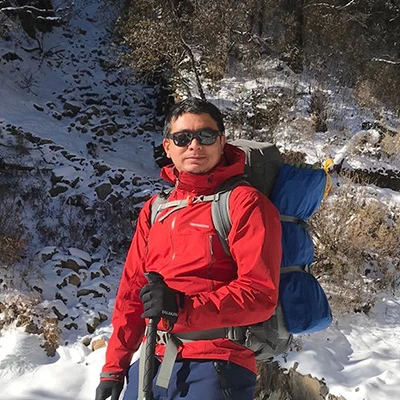Nepal, a land where towering peaks kiss the heavens and ancient cultures thrive in the shadow of giants, has long captivated the hearts of adventurers and spiritual seekers alike. The allure of trekking through this majestic nation is undeniable, offering not just physical challenges but also profound encounters with nature and humanity. As we look ahead to 2025 and 2026, Moon Himalaya Adventure, your trusted partner in Himalayan exploration, is thrilled to present a curated selection of the ten best treks Nepal has to offer. Whether you dream of standing at the foot of the world's highest mountain, immersing yourself in vibrant local traditions, or discovering remote valleys untouched by time, our guide will navigate you through the highlights, cultural nuances, optimal trekking seasons, and essential details of each unforgettable journey. Prepare to be inspired and embark on the adventure of a lifetime!
Best Trek in Nepal 2025 / 2026
Table of Contents
Everest Base Camp Trek: Following in the Footsteps of Legends
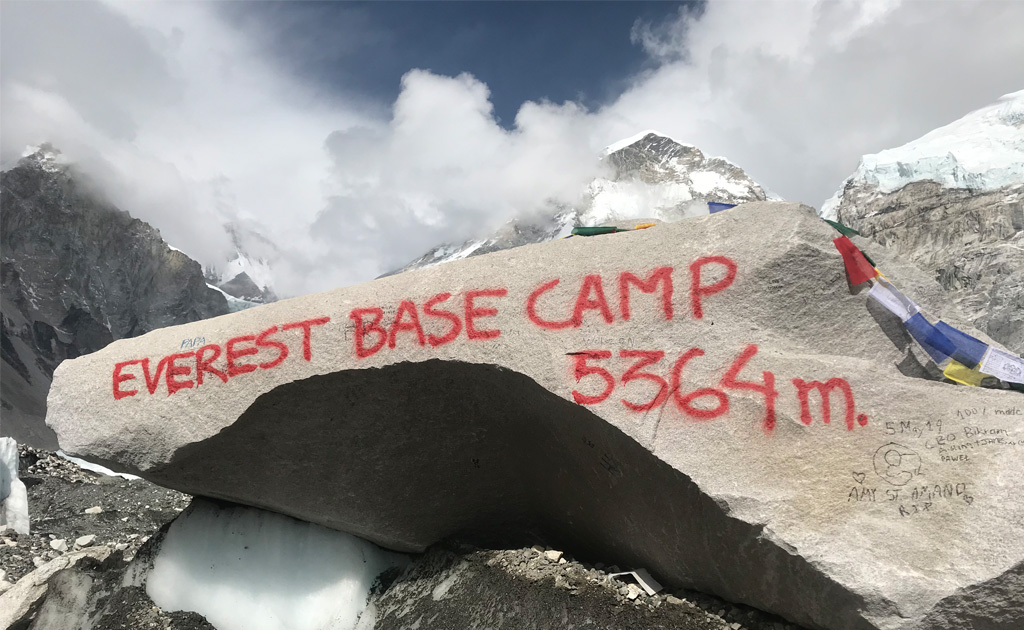
Maximum Altitude: 5,545 meters (18,192 feet) at Kala Patthar.
Duration: 16 Days
The Everest Base Camp Trek (EBC Trek) remains an undisputed classic, a pilgrimage for mountaineers and adventure enthusiasts worldwide. The sheer majesty of the Khumbu region, culminating in the awe-inspiring views of Mount Everest, Lhotse, Nuptse, and Pumori, is an experience that etches itself into the soul.
Highlights:
- Iconic Mountain Vistas: Witness firsthand four of the world's six highest peaks, including the unparalleled Everest. The panoramic views from Kala Patthar are particularly breathtaking, offering a golden sunrise over the Everest massif.
- Sherpa Culture: Immerse yourself in the rich culture and warm hospitality of the Sherpa people, renowned mountaineers and devout Buddhists. Explore ancient monasteries like Tengboche, adorned with intricate murals and prayer flags fluttering in the wind.
- Lukla's Thrilling Flight: The exhilarating flight to and from Lukla, often hailed as one of the world's most scenic and adventurous airport landings, sets the stage for your incredible journey.
- Khumbu Glacier: Traverse the mighty Khumbu Glacier, a river of ice flowing from the slopes of Everest, and witness the raw power of nature.
- Everest Base Camp Experience: Stand at the legendary Everest Base Camp (5,364m/17,598ft), a bustling hub during climbing season and a testament to human ambition and resilience.
Cultural Experiences: Engage with Sherpa communities in Namche Bazaar, Khumjung, and Pangboche. Visit local homes, learn about their unique customs and traditions, and perhaps even participate in a traditional Sherpa dance or ceremony. The Mani walls and prayer wheels along the trails offer glimpses into their deep-rooted Buddhist faith.
Best Time to Trek: The ideal times for the EBC trek are during the spring (March to May) and autumn (September to November). These seasons offer stable weather conditions, clear skies, and moderate temperatures.
Seasonal Experiences:
- Spring (March-May): Blooming rhododendrons paint the hillsides in vibrant colors. The weather is generally mild and dry, offering excellent visibility. This is also the pre-monsoon climbing season, so you might witness expeditions preparing to summit Everest.
- Summer/Monsoon (June-August): Heavy rainfall makes trekking challenging and potentially hazardous due to slippery trails and reduced visibility. Landslides are also a risk.
- Autumn (September-November): Post-monsoon brings crisp, clear skies and stunning mountain views. The temperatures are pleasant for trekking, and the landscape is lush and green. This is the peak trekking season.
- Winter (December-February): Cold temperatures and potential snowfall make trekking difficult, especially at higher altitudes. However, for experienced trekkers prepared for winter conditions, the trails are less crowded, and the mountain scenery can be incredibly dramatic.
Food and Accommodation: Tea houses along the EBC trail provide basic but comfortable accommodation in twin-sharing rooms. Meals typically consist of Nepali staples like dal bhat (rice, lentils, and vegetables), noodles, soups, and some Western dishes.
Permits: Sagarmatha National Park Entry Permit and Khumbu Pasang Lhamu Rural Municipality Permit.
Pikey Peak Trek: A Hidden Gem with Panoramic Views
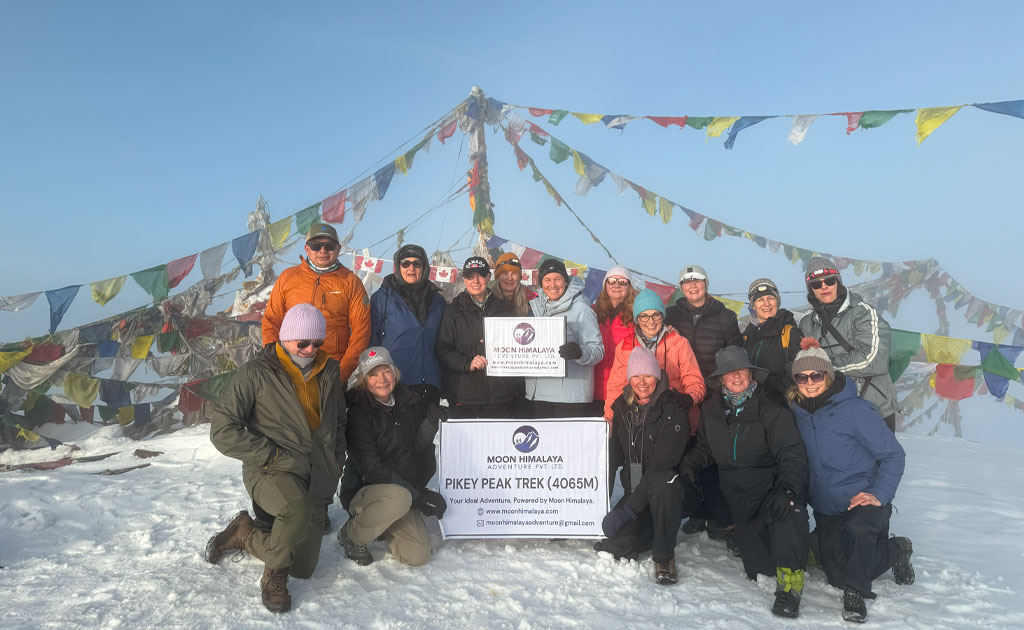
Maximum Altitude: Pikey Peak (4,065 m / 13,336 feet).
Duration: 14 Days
For those seeking a less crowded and equally rewarding trekking experience with unparalleled views of the Everest range, the Pikey Peak Trek is an exceptional choice. Often overlooked, this trek offers stunning panoramic vistas, including a unique perspective of Everest from the lower Solu region. Explore the traditional villages of the lower Solukhumbu region, interacting with the warm and welcoming Sherpa and Tamang communities away from the main tourist trails. The Pikey Peak Trek offers a stunning, wide-angle panorama of the Himalayan range, including Mount Everest, Lhotse, Makalu, Kanchenjunga, Gauri Shankar, Cho Oyu, Thamserku, and many others.
Highlights:
- Spectacular Everest Panorama: Pikey Peak (4,065m/13,336ft) offers arguably the best panoramic views of Everest, along with Kanchenjunga, Makalu, Lhotse, Nuptse, and Gauri Shankar.
- Authentic Sherpa Culture: Explore the traditional villages of the lower Solukhumbu region, interacting with the warm and welcoming Sherpa communities away from the main tourist trails.
- Beautiful Rhododendron Forests: Trek through dense forests of rhododendron, especially vibrant during the spring blooming season.
- Peaceful and Less Crowded Trails: Enjoy a more tranquil trekking experience compared to the popular Everest Base Camp and Annapurna regions.
- Sunrise and Sunset Views: Witness breathtaking sunrises and sunsets painting the snow-capped peaks in hues of gold and orange from various viewpoints along the trail.
Best Time to Trek: Spring (March to May) and autumn (September to November) offer the best weather conditions for the Pikey Peak Trek.
Food and Accommodation: The trail is dotted with community-run lodges and tea houses that offer basic but clean rooms and hearty meals. The food is simple and traditional, providing a great opportunity to enjoy authentic Sherpa cuisine.
Permits: Sagarmatha National Park Entry Permit and a local permit from the Solu-Khumbu Rural Municipality.
Annapurna Base Camp Trek: Journey into the Heart of the Annapurna
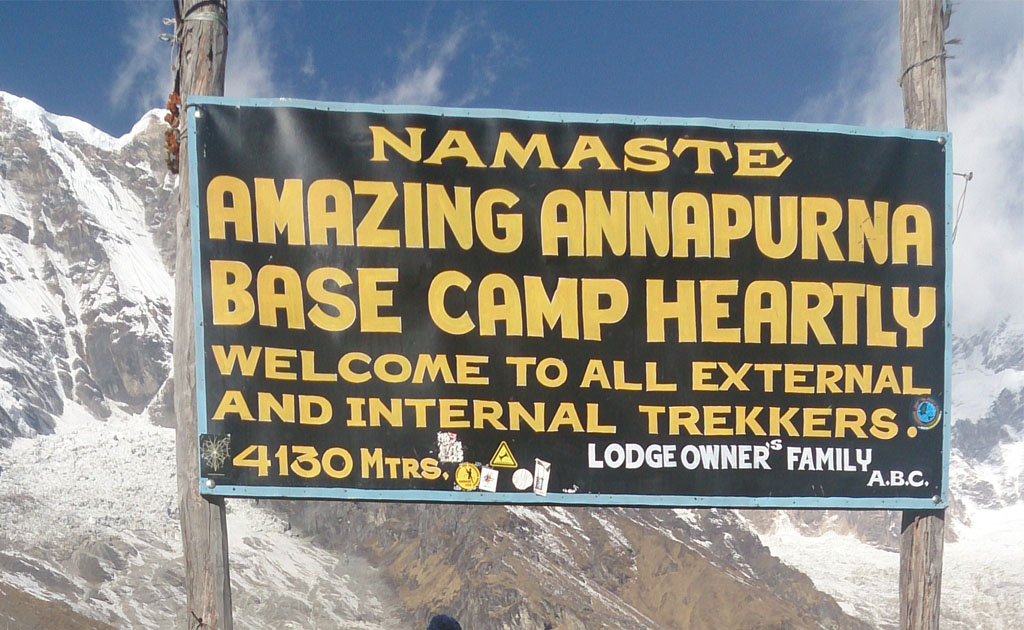
Maximum Altitude: 4,130 meters (13,550 feet) at Annapurna Base Camp.
Duration:13 Days
The Annapurna Base Camp Trek (ABC Trek) is a magnificent journey into the "Annapurna Sanctuary," a natural amphitheater ringed by some of the world's most spectacular peaks. This trek is a perfect blend of diverse landscapes, rich culture, and incredible mountain views, making it a favorite for trekkers of all levels. You can see beautiful mountain range of Annapurna I, Annapurna South, Hiunchuli, Machapuchare (Fishtail), Gangapurna, Annapurna III, and Dhaulagiri from Poon Hill.
Highlights:
- Annapurna Sanctuary: Reach the heart of the sanctuary, a high-altitude basin surrounded by a wall of peaks including Annapurna I, Annapurna South, Machapuchare (Fishtail), and Hiunchuli.
- Poon Hill Sunrise: A pre-dawn hike to Poon Hill (3,210m) rewards you with one of the most famous sunrise views in the Himalayas, as the first rays of light illuminate Dhaulagiri and the Annapurna range.
- Diverse Landscapes: The trail winds through lush rhododendron and bamboo forests, terraced rice paddies, and traditional Gurung and Magar villages before ascending into the alpine environment of the sanctuary.
- Natural Hot Springs: Relax and soothe your muscles in the natural hot springs at Jhinu Danda, a perfect treat after days of trekking.
Cultural Experiences: The trek is a deep dive into the culture of the Gurung and Magar communities, particularly in villages like Ghandruk and Chhomrong. The vibrant, traditional stone houses, terraced farms, and warm hospitality offer a genuine glimpse into Nepalese rural life. You will often be greeted with a friendly "Namaste" and a genuine smile.
Food and Accommodation: Similar to other tea house treks, accommodation is in basic lodges. Meals are simple but hearty, with local dal bhat being the most popular option.
Permits: Annapurna Conservation Area Permit (ACAP) and Trekkers' Information Management System (TIMS) card.
Best Time to Trek: The best times are spring (March to May) and autumn (September to November), offering clear skies and comfortable temperatures.
Seasonal Experiences:
- Spring (March-May): The rhododendron forests burst into a riot of color, creating a spectacular backdrop. The weather is warm and stable, making it a very popular time.
- Summer/Monsoon (June-August): The trails become slippery and leech-infested. While the mountains are often obscured by clouds, the waterfalls are at their most powerful, and the landscape is incredibly lush and green.
- Autumn (September-November): This is the most popular season due to the post-monsoon clean air, which provides crystal-clear mountain views. The temperatures are mild, and the trails are in excellent condition.
- Winter (December-February): Temperatures can be very cold, and snow can block the higher parts of the trail, but the views are crisp and the trails are much quieter.
Annapurna Circuit Trek: The Classic Himalayan Round Trip

Maximum Altitude: 5,416 meters (17,769 feet) at Thorong La Pass.
Duration: 15 Days
For those with more time and a desire for a grander adventure, the Annapurna Circuit Trek is a journey that showcases Nepal's incredible geographical and cultural diversity. From subtropical valleys to high-altitude deserts, this trek is a complete Himalayan experience. Annapurna I, Annapurna II, Annapurna III, Annapurna IV, Gangapurna, Machapuchare, Dhaulagiri, Manaslu, Tilicho Peak, and many others majestic mountains can been during the trek.
Highlights:
- Thorong La Pass: Conquer the challenging but rewarding Thorong La Pass (5,416m/17,769ft), the highest point of the trek, which connects the Manang and Mustang valleys.
- Diverse Ecosystems: The trail takes you through a mind-boggling variety of landscapes, from lush rice terraces and dense forests in the lower sections to arid, windswept high-altitude deserts reminiscent of Tibet.
- Cultural Fusion: Experience a fascinating mix of cultures, from the Hindu-dominated lower villages to the Tibetan Buddhist communities in the upper valleys.
- Holy Sites: Visit the sacred Hindu and Buddhist pilgrimage site of Muktinath, a symbol of religious harmony, located after the Thorong La Pass.
Cultural Experiences: The Annapurna Circuit is a cultural tapestry. In the lower regions, you'll encounter Gurung and Magar villages, while the upper Mustang region is home to Manangi and Thakali people with strong Tibetan influences. The colorful prayer flags, chortens, and monasteries are a constant presence, adding a spiritual dimension to your journey.
Food and Accommodation: The circuit is well-developed with a chain of tea houses, providing a range of food options from local Nepali cuisine to Western dishes.
Permits: Annapurna Conservation Area Permit (ACAP) and Trekkers' Information Management System (TIMS) card.
Best Time to Trek: The most favorable trekking seasons are spring (March to May) and autumn (September to November).
Seasonal Experiences:
- Spring (March-May): The lower sections are green and vibrant with blooming flowers. The weather is stable, and the pass is usually clear of heavy snow.
- Summer/Monsoon (June-August): While the lower regions are wet and cloudy, the upper Manang Valley is in the rain shadow of the Annapurna range, making it a viable trekking option with a unique green landscape. However, the lower trails can be challenging.
- Autumn (September-November): This is the peak season. The skies are exceptionally clear, offering stunning mountain views, and the weather is perfect for the high-altitude pass.
- Winter (December-February): Thorong La Pass is often closed or extremely difficult to cross due to heavy snowfall. Trekking is possible in the lower valleys, but not the full circuit.
Ghorepani Poon Hill Trek: The Short and Sweet Classic
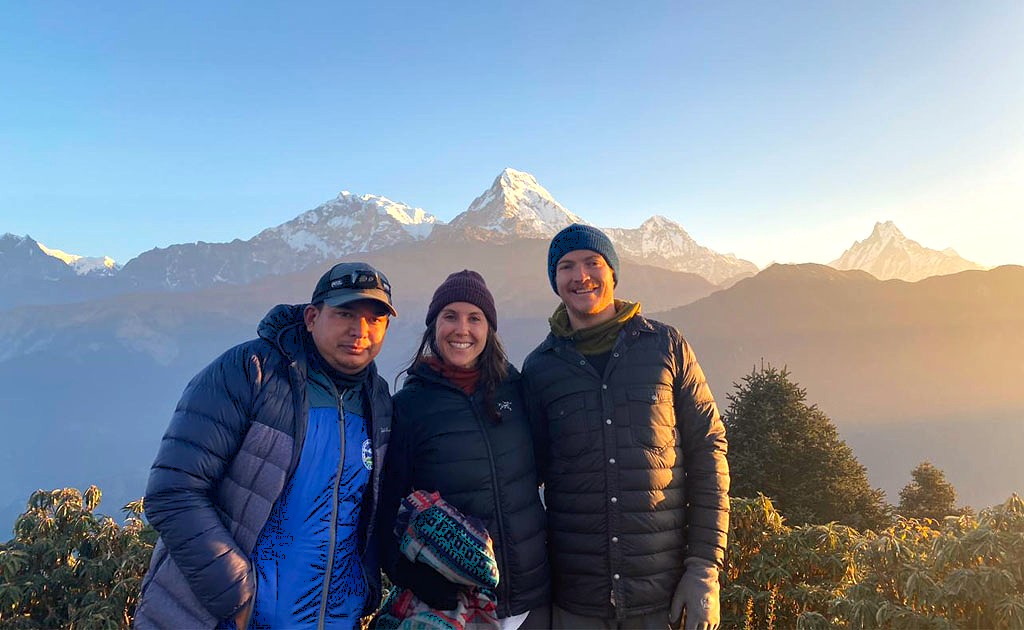
Maximum Altitude: 3,210 meters (10,532 feet) at Poon Hill.
Duration: 10 Days
Often considered the quintessential short trek in Nepal, the Ghorepani Poon Hill Trek is a perfect introduction to Himalayan trekking. It offers a taste of everything Nepal has to offer – stunning mountain views, charming villages, and lush forests – all within a manageable timeframe.
Highlights:
- Poon Hill Sunrise: The main event is the sunrise hike to Poon Hill (3,210m/10,532ft), which offers a magnificent 360-degree panorama of the Annapurna and Dhaulagiri ranges including Annapurna South, Annapurna I, Dhaulagiri, Machapuchare, Hiunchuli, Nilgiri South, and Tukuche Peak.
- Rhododendron Forests: Trekking through one of the largest rhododendron forests in Nepal, which bursts into a spectacle of red, pink, and white flowers in the spring.
- Traditional Villages: Explore the beautiful Gurung and Magar villages of Ulleri, Ghorepani, and Ghandruk, characterized by their traditional stone architecture and terraced fields.
- Easy Accessibility: The trek starts and ends near Pokhara, making it easily accessible and perfect for those with limited time or less trekking experience.
Cultural Experiences: This trek is a fantastic cultural journey, providing intimate encounters with the Gurung and Magar communities. You'll witness their unique hospitality, traditional dress, and daily village life. Ghandruk, in particular, has a museum that offers deeper insights into Gurung history and traditions.
Food and Accommodation: The trail is well-equipped with numerous tea houses offering a wide variety of meals and comfortable lodging.
Permits: Annapurna Conservation Area Permit (ACAP) and Trekkers' Information Management System (TIMS) card.
Best Time to Trek: The best seasons are spring (March to May) and autumn (September to November), for the most part.
Seasonal Experiences:
- Spring (March-May): The entire trail is ablaze with the colors of blooming rhododendrons, making it a photographer's paradise. The weather is warm and pleasant.
- Summer/Monsoon (June-August): The trails are wet, and the views are often obscured, but the landscape is incredibly vibrant.
- Autumn (September-November): The skies are clear, the mountain views are sharp, and the weather is ideal, making this the most popular time for the trek.
- Winter (December-February): Temperatures drop significantly, and there can be snow, especially at higher elevations, but the clear skies offer breathtaking mountain clarity.
Langtang Gosaikunda Trek: The Valley of Glaciers and Sacred Lakes
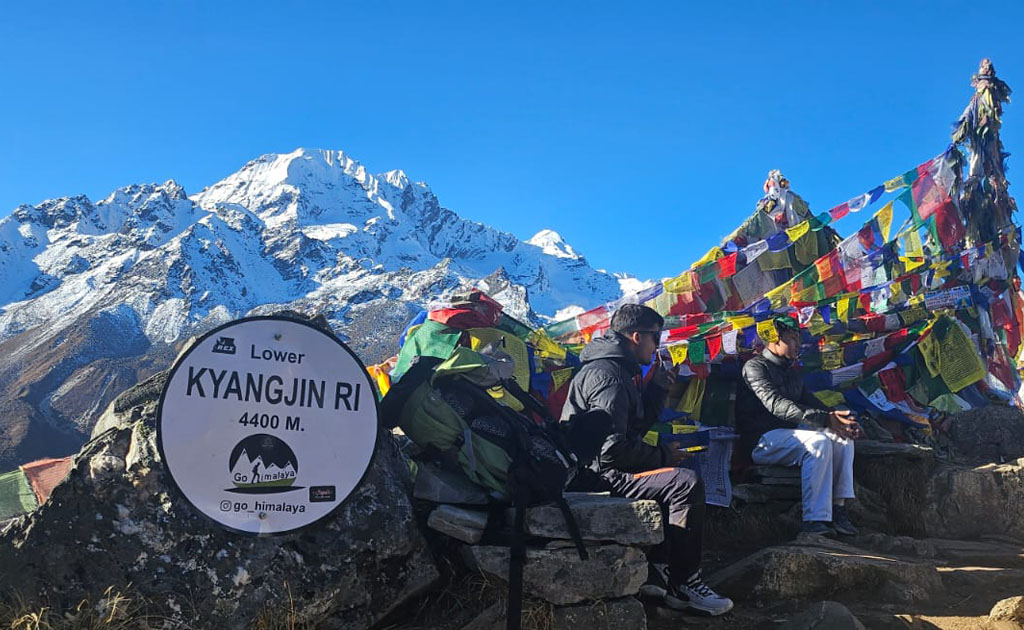
Maximum Altitude: 5,033 meters (16,513 feet) at Tserko Ri.
Duration: 15 Days
The Langtang Gosaikunda Trek offers a unique combination of lush valleys, high-altitude alpine meadows, and the sacred Gosaikunda Lake. This trek is perfect for those who want a rewarding high-altitude experience without the crowds of the Everest or Annapurna regions.
Highlights:
- Langtang Valley: Trek through the stunning Langtang Valley, a narrow valley with towering peaks on either side, often called the "Valley of Glaciers."
- Gosaikunda Lake: Visit the holy Gosaikunda Lake, a high-altitude alpine lake sacred to both Hindus and Buddhists. The walk around the lake is a spiritual and scenic experience.
- Tamang Culture: Immerse yourself in the rich Tamang culture and traditions, a community that has strong ties to Tibet. The villages and monasteries are filled with colorful prayer flags and unique art.
- Tserko Ri Climb: A challenging but rewarding side trip to Tserko Ri (5,033 m) offers an incredible panoramic view of the entire Langtang range which includes Langtang Lirung, Langtang Ri, Dorje Lakpa, Ganesh Himal, Manaslu, and many other peaks.
Cultural Experiences: The trek is a journey into the heart of Tamang culture. The trail passes through traditional Tamang villages, providing a chance to interact with locals, learn about their unique way of life, and see their traditional houses and Buddhist monasteries.
Food and Accommodation: The trail is well-served by tea houses, offering basic rooms and a limited but sufficient menu.
Permits: Langtang National Park Entry Permit and Trekkers' Information Management System (TIMS) card. As of 2025, a licensed guide is mandatory for all trekkers in the Langtang region.
Best Time to Trek: The most popular seasons are spring (March to May) and autumn (September to November).
Seasonal Experiences:
- Spring (March-May): The lower sections of the trail are vibrant with blooming wildflowers and rhododendrons. The weather is stable, and visibility is good.
- Summer/Monsoon (June-August): The trails can be wet and slippery, and the views are often obscured. However, the misty, cloud-covered valleys offer a mystical and surreal atmosphere.
- Autumn (September-November): The skies are clear and the air is crisp, providing stunning views of the surrounding mountains. This is the peak season for a reason.
- Winter (December-February): Gosaikunda Lake often freezes over, and the high passes can be snowbound, making the trek challenging and only suitable for experienced trekkers with the right gear.
Manaslu Circuit Trek: A Grand Himalayan Adventure
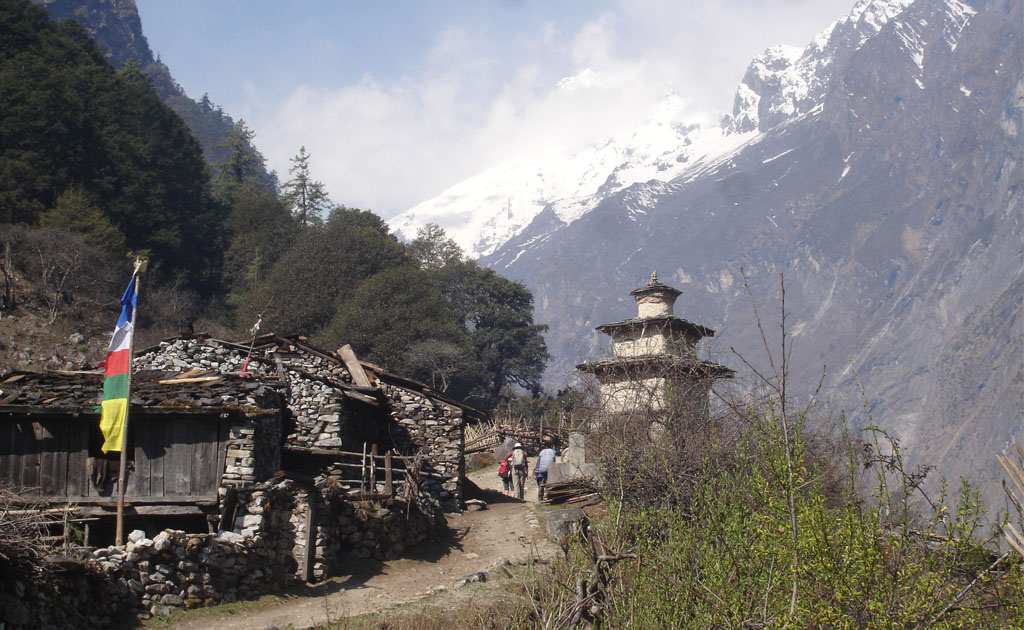
Maximum Altitude: 5,106 meters (16,752 feet) at Larkya La Pass.
Duration: 17 Days
The Manaslu Circuit Trek offers a remote and rugged experience with a cultural richness and stunning scenery of Mt. Manaslu (the world's eighth-highest mountain), Himalchuli, Ngadi Chuli, Samagaon Peak, Cheo Himal, and others.. This is a journey for true adventurers seeking an unspoiled and challenging high-altitude trek.
Highlights:
- Larkya La Pass: Crossing the formidable Larkya La Pass (5,106m/16,752ft) is the high point of the trek and offers a spectacular panoramic view of the Manaslu, Himalchuli, and Cheo Himal ranges.
- Untouched Wilderness: The trek is a journey through a restricted area, ensuring that the trails and villages are less developed and more authentic.
- Cultural Diversity: Experience the transition from Hindu culture in the lowlands to Tibetan Buddhist culture in the upper Budi Gandaki Valley, home to the Tsum and Nubri people.
- Spectacular Scenery: The trail follows the Budi Gandaki River gorge, offering incredible waterfalls, suspension bridges, and dramatic cliffs before opening up into a high-altitude alpine landscape.
Cultural Experiences: The trek is a cultural immersion into a region with strong ties to Tibet. The villages in the upper part of the circuit are home to the Nupri and Tsum people, whose lives are deeply influenced by Tibetan Buddhism. You will see numerous mani walls, chortens, and ancient monasteries, including the stunning Pung-Gyen Gompa.
Food and Accommodation: The trail is dotted with simple tea houses, with basic but adequate facilities. The food is traditional Nepali fare.
Permits: The Manaslu Circuit is a restricted area, requiring a special trekking permit (Manaslu Restricted Area Permit) and two conservation area permits (Manaslu Conservation Area Permit and Annapurna Conservation Area Permit). A minimum of two trekkers is required, accompanied by a licensed guide. Solo trekking is not allowed.
Best Time to Trek: The ideal seasons are spring (March to May) and autumn (September to November).
Seasonal Experiences:
- Spring (March-May): The weather is generally stable, and the rhododendrons are in bloom. The Larkya La Pass is typically open and clear of snow.
- Summer/Monsoon (June-August): The lower sections are very wet, with frequent landslides. The views are obscured, and trekking is not recommended.
- Autumn (September-November): Post-monsoon, the skies are clear, and the views of Manaslu and the surrounding peaks are magnificent. The weather is stable, making this the best time to cross the pass.
- Winter (December-February): Larkya La Pass is often closed due to heavy snow, and the temperatures are extremely cold. The trek is not feasible during these months.
Kanchenjunga Base Camp Trek: An Epic Journey to the Third-Highest Peak
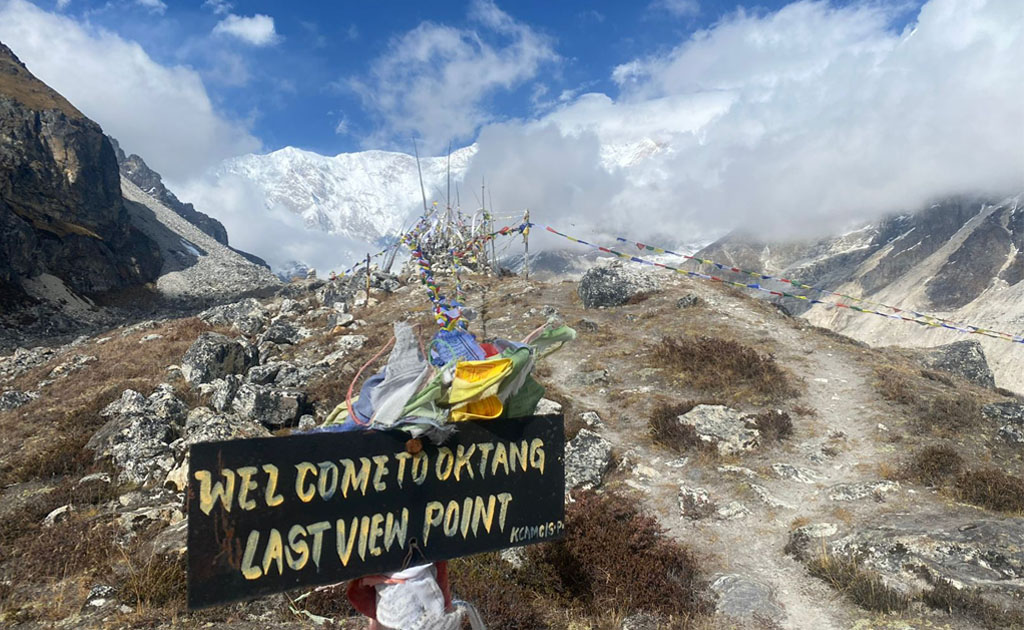
Maximum Altitude: 5,143 meters (16,873 feet) at Pangpema (Kanchenjunga North Base Camp).
Duration: 22 Days
The Kanchenjunga Base Camp Trek is a truly epic and challenging expedition into a remote, wild corner of Eastern Nepal. This is a trek for experienced adventurers who desire solitude, raw natural beauty, and the chance to stand at the foot of the world's third-highest mountain. Often done as a circuit to both the north and south base camps, this journey offers a comprehensive and unforgettable wilderness experience.
Highlights:
- Kanchenjunga Massif: Stand in the shadow of the colossal Kanchenjunga (8,586m/28,169ft), known as the "Five Treasures of the Great Snow," and its satellite peaks. The close-up views from both the North Base Camp (Pangpema) and South Base Camp (Oktang) are unparalleled.
- Pristine Wilderness: Trek through the Kanchenjunga Conservation Area, a protected region of immense biodiversity. The trails are rugged and less-trodden, passing through lush subtropical plains, alpine meadows, and glacial moraines.
- Cultural Diversity: Encounter a fascinating mix of cultures, including the Rai, Limbu, and Sherpa people, who call this remote region home. You'll experience their unique traditions and warm hospitality in small, scattered villages.
- Yalung Glacier: The trek takes you across the massive Yalung Glacier, providing a visceral sense of the scale and power of the Himalayan landscape.
Cultural Experiences: The trek offers a genuine immersion into the lives of the local communities, whose unique cultural heritage is a highlight of the journey. Their traditions, festivals, and deep connection to the mountains are a humbling sight.
Food and Accommodation: Accommodation is basic, with a mix of simple tea houses and camping, especially in the more remote sections. Meals are prepared by a trekking cook, offering a more varied menu.
Permits: Kanchenjunga is a restricted area, requiring a special trekking permit (Restricted Area Permit) and a Kanchenjunga Conservation Area Project (KCAP) Permit. A minimum of two trekkers is required, and a licensed guide is mandatory. Solo trekking is strictly prohibited.
Best Time to Trek: The ideal seasons are spring (March to May) and autumn (September to November), which provide the most stable weather and clearest views.
Seasonal Experiences:
- Spring (March-May): The lower valleys are adorned with blooming rhododendrons, magnolias, and other wildflowers. The temperatures are mild, and the skies are generally clear.
- Summer/Monsoon (June-August): The lower sections receive heavy rainfall, making the trails difficult. The views are often obscured, and landslides can be a risk, so this season is not recommended.
- Autumn (September-November): The skies are at their clearest after the monsoon rains, offering breathtaking views of the Kanchenjunga massif and surrounding peaks. This is the prime season for this trek.
- Winter (December-February): The higher altitudes, including the passes, are often covered in deep snow, making the trek highly challenging and sometimes impassable. Temperatures are also extremely cold.
Lower Dolpo Trek: A Journey into Nepal's Mystical West
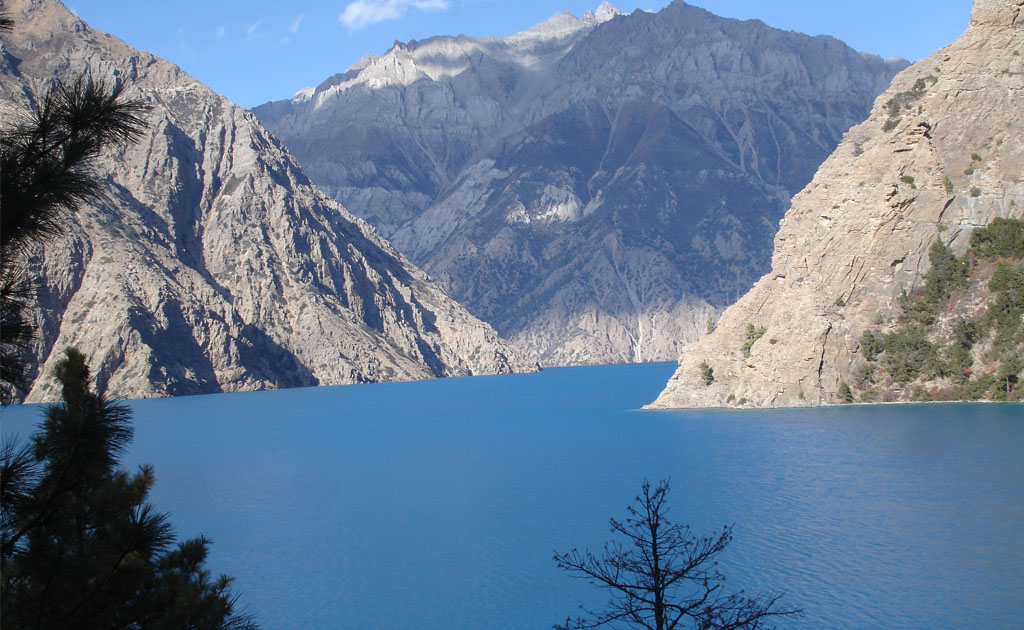
Maximum Altitude: 5,309 meters (17,418 feet) at Numa La Pass.
Duration: 19 Days
The Lower Dolpo Trek is a rare and profound journey into a truly remote and mystical part of Nepal. This trek is for those who want to experience a pristine landscape and a culture that has remained largely unchanged for centuries, far from the modern world. It is a true expedition.
Highlights:
- Shey Phoksundo Lake: The stunning turquoise-blue waters of Shey Phoksundo Lake are the crown jewel of this trek. The lake is considered sacred and is a sight of unparalleled beauty.
- Ancient Tibetan-Bon Culture: The Dolpo region is home to communities that practice a pre-Buddhist, indigenous faith called Bon. You will encounter ancient monasteries, traditional Bon practices, and a culture that is a living relic of old Tibet.
- Remote and Untouched Wilderness: The trek takes you through a wild and rugged landscape of high passes, deep canyons, and barren, windswept plateaus that feel completely isolated from the rest of the world.
- Shey Phoksundo National Park: Trek through Nepal's largest national park, home to diverse flora and fauna, including the elusive snow leopard.
Cultural Experiences: The cultural experience in Lower Dolpo is unlike any other in Nepal. The Dolpo people have a distinct way of life, with strong Tibetan influences and a deep reverence for nature. This is a camping-style trek, offering a more intimate connection with the environment and the local people.
Food and Accommodation: This is a camping-style trek, as there are very few tea houses. All meals and accommodation are arranged by the trekking company. Food is prepared by a dedicated trekking cook, offering a more diverse and wholesome menu.
Permits: Lower Dolpo is a restricted area, requiring a special trekking permit. You also need a Shey Phoksundo National Park Entry Permit. A licensed guide is mandatory, and solo trekking is not allowed.
Best Time to Trek: The best seasons are late spring (April to June) and autumn (September to November). The region is in the rain shadow of the Dhaulagiri and Annapurna ranges, making it suitable for monsoon trekking, too.
Seasonal Experiences:
- Spring (April-June): The weather is warm and dry, with blooming wildflowers, and the passes are generally clear.
- Summer/Monsoon (June-August): While the rest of Nepal is wet, Dolpo remains relatively dry. The landscapes are lush and green, and the skies can be dramatic.
- Autumn (September-November): The classic trekking season offers clear skies, dry trails, and magnificent views.
Naarphu Valley Trek: A Hidden World of Ancient Secrets
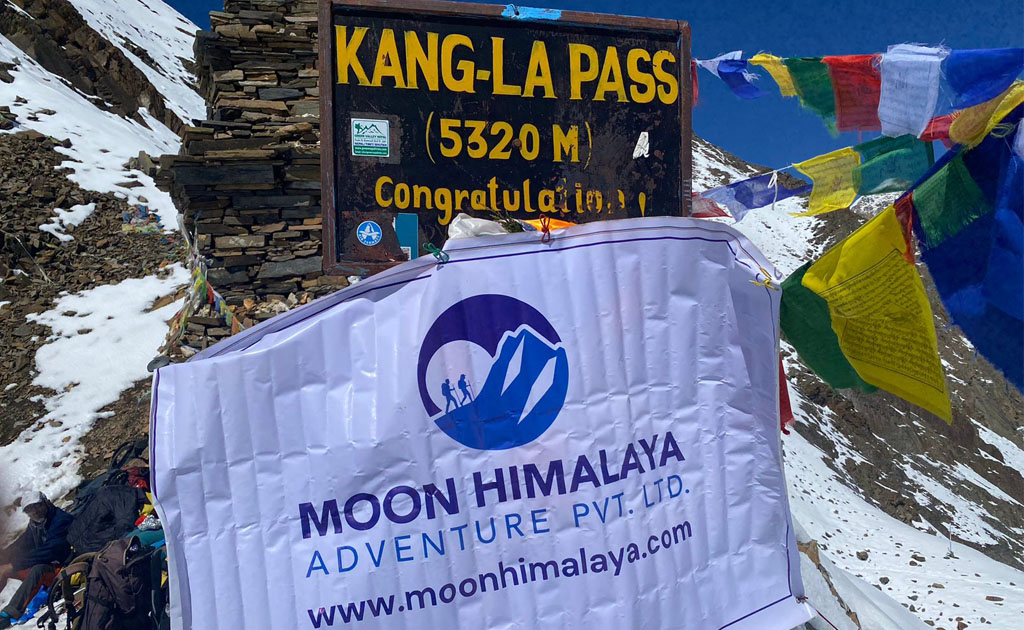
Maximum Altitude: 5,320 meters (17,454 feet) at Kang La Pass.
Duration: 22 Days
Hidden between the popular Annapurna and Manaslu circuits, the Naarphu Valley Trek is a journey into a secluded, high-altitude world that has only been open to trekkers since 2003. This is a trek for those who seek to explore a pristine landscape and a culture frozen in time.
Highlights:
- Secluded Valleys: Trek through the valleys of Naar and Phu, which are tucked away from the main trekking routes, preserving their unique culture and ancient way of life.
- Tibetan-Influenced Villages: The villages of Naar and Phu are incredibly ancient, with unique architecture, and their inhabitants speak a Tibetan dialect.
- Kang La Pass: Cross the high Kang La Pass (5,320m/17,454ft), which offers a challenging and rewarding ascent with incredible views of Annapurna II, Gangapurna, and Tilicho Peak.
- Ancient Monasteries: Visit centuries-old monasteries and chortens that are still active spiritual centers for the local communities.
Cultural Experiences: The trek is a profound cultural experience, offering an intimate look at a community that has lived in isolation for centuries. The people of Naar and Phu, with their distinct language and customs, offer a true glimpse into a living Tibetan culture. The local festivals, such as the Yartung Horse Festival, are a rare and memorable sight.
Food and Accommodation: Accommodation is in basic tea houses. The food is simple but provides sustenance for the tough trekking days.
Permits: A restricted area trekking permit is required, which is relatively expensive, and an Annapurna Conservation Area Permit (ACAP) is also needed. A licensed guide is mandatory, and a minimum of two trekkers must be in the group.
Best Time to Trek: Spring (March to May) and autumn (September to November).
Seasonal Experiences:
- Spring (March-May): The weather is stable, and the trail is often adorned with alpine flowers. The views are excellent, and the pass is clear of heavy snow.
- Summer/Monsoon (June-August): The valley is in a rain shadow, making it a viable monsoon trek, but the trail to get there is still prone to rain.
- Autumn (September-November): The clear, crisp skies of autumn offer the best conditions for trekking and mountain views.
- Winter (December-February): The high Kang La Pass is closed, and the villages are often deserted as locals move to lower elevations, making trekking impossible.
Ready to Begin Your Himalayan Adventure?
With so many incredible options, choosing the perfect trek for 2025 and 2026 can be a challenge. At Moon Himalaya Adventure, we specialize in creating personalized and unforgettable journeys. Whether you want to conquer the classic Everest Base Camp, discover the hidden beauty of the Manaslu Circuit Trek, or embark on a true expedition to Lower Dolpo, our team of experienced guides and staff is dedicated to ensuring your safety and enjoyment every step of the way.
The Himalayas are calling, and we are here to help you answer that call. Email us at moonhimalayaadventure@gmail.com or WhatsApp at +977 9860455963.
Click here to start planning your dream trek in Nepal for 2025!

